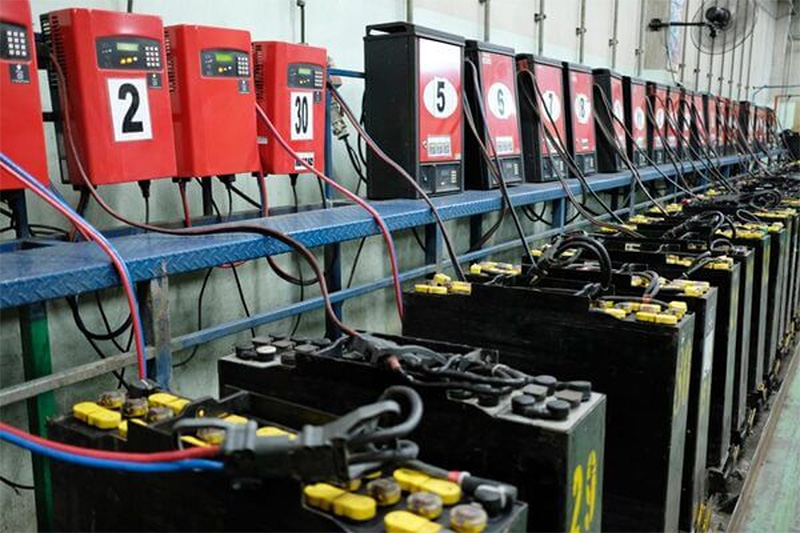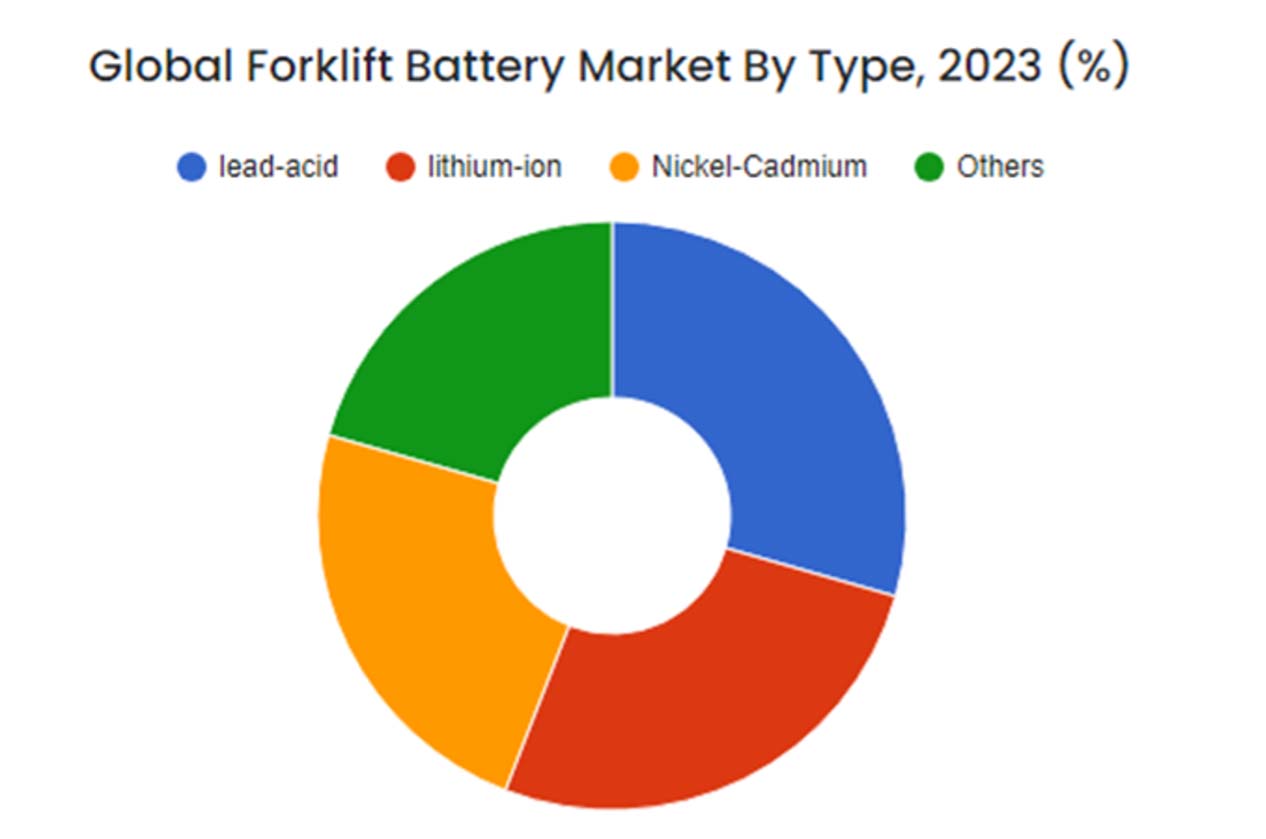
Operating costs are a crucial component of the overall Total Cost of Ownership (TCO) for material handling equipment. When selecting the optimal energy solution for your forklift truck fleet, various factors must be taken into account.
These include the nature of the business, specific application requirements, utilisation rates, company objectives, operational aspects, sustainability goals, and more. Deciding upon the most appropriate power source will help fleet managers to optimise TCO by utilising the right energy source, trucks, and operational layout for their business.
There are three common types of forklift: electric, LPG (Liquid Petroleum Gas) and diesel options, but let’s focus on an electric fleet.

Electric power options
Electric forklifts are clearly the material-handling mainstay of the future. Power source options include lead acid batteries, lithium-ion batteries or hydrogen fuel cells. Selecting the right power source for your electric fleet will have an impact on your business as well as dictate what environmental impact your business has. Here we weigh up the various pros and cons and considerations for each battery type.
Each battery type has different advantages and drawbacks, they range in price levels and offer varying levels of energy efficiency, which need to be taken into account when evaluating which system will suit a company’s objectives and needs.
Factors that need to be taken into consideration include;-
These are tried and tested and have been around for several decades and are still the most used forklift batteries due to their lower price compared to other options, and relatively low maintenance and repair costs. They have been a popular choice due to their reliability, affordability, and ability to provide sufficient power for the demanding tasks of forklift operations. They are significantly cheaper than lithium-ion batteries and can provide comparable performance. While newer battery technologies have emerged in recent years, lead-acid batteries continue to be widely utilised in the forklift industry due to their proven track record and suitability for many applications.
Green credentials
They are also highly recyclable - according to the Battery Council International, more than 99 percent of all battery lead, plastic and electrolytes is recycled. They also have a lower carbon footprint than lithium-ion batteries, which are manufactured using a more energy-intensive process.
However, lead-acid batteries do require regular maintenance, have longer charging times and may under-perform in cold conditions. Lead-acid forklift batteries might be cheaper upfront but are more expensive to own and maintain. In addition, because lead-acid batteries release hydrogen during charging, a monitoring and ventilation system is important to remove the dangerous gas to avoid dangerous build up. Staff handling training is vital.
Lithium-ion batteries
These were pioneered in use by Toyota Material Handling , in 2013 and are now a primary power source in their forklifts. They are favoured for their lightweight, compact size, faster, consistent charging and sustainability as they use less energy that the traditional lead -acid predecessors. Lithium-ion batteries can be recharged at any time (opportunity charging) and level without affecting battery life. This makes loading times more flexible and ensures trucks remain in service when needed. However, bear in mind that that since Li-ion battery charging is faster, they also require higher input current. Busy, multi-shift operations gain the biggest benefits of switching to lithium-ion forklift batteries.
Longer life span
Additionally they have more than three times the lifecycle of lead-acid batteries, reducing the frequency of replacement, and are 30% to 40% more energy-efficient. Lithium-ion batteries excel in cold environments, and their versatility extends to outdoor usage as well. A high-quality industrial lithium-ion battery pack will feature protection against thermal runaway, the chemical heating process that leads to the sort of explosions reported in consumer electronics.
However their cost maybe an initial drawback , as they cost twice as much as lead-acid batteries and there is a higher cost associated with re-cycling them. Older forklifts may not be compatible to these more modern power sources.
Hydrogen Fuel Cells
Hydrogen fuel cells offer several benefits for forklifts, making them an increasingly popular alternative to traditional lead-acid batteries or even lithium-ion batteries in certain applications. They offer much faster refuelling, which reduces downtime and increases productivity. They typically offer longer run times compared to other batteries. Forklifts powered by hydrogen fuel cells can operate continuously throughout a shift without the need for lengthy recharge or battery swap-out periods.
Cost and space saving
They are environmentally beneficial as they produce zero emissions and with no risk of acid spills or explosive gases associated with traditional lead-acid batteries, hydrogen cells are seen as a safer option. A 2013 report by the National Renewable Energy Laboratory (NREL) found that hydrogen forklifts can reduce the labour cost of refuelling/recharging by 80% and require 75% less space compared to traditional battery recharging infrastructure.
Whilst hydrogen fuel cells may require additional, new, upfront infrastructure investment for refuelling stations and storage, (Hydrogen must be stored in high-pressure tanks) their benefits in terms of fast refuelling, extended run time, consistent power output, environmental friendliness, and space efficiency make them a compelling option, being most suitable for large fleets based at one location.
Making the comparisons simpler
Toyota Industries, a major supplier supporting the material handling sector, has drawn up a useful matrix to help summarise the various aspect to be considered. Their guide can be downloaded here https://info.toyota-forklifts.co.uk/download-the-energy-source-comparison-guide
Safety considerations
Forklift battery safety is an important factor in forklift operations. Most battery-related incidents occur during battery moving or watering.
Lead-acid batteries are composed of 2 high-risk chemicals- sulfuric acid and lead – hence they pose a safety hazard to operators and the environment. PPE is required when handling and the use of hydrogen sensors is required in storage room. They are also highly explosive and need a well-ventilated room when charging.
Lithium-ion batteries are safer than lead-acid batteries, posing less health risks/hazards. Being completely sealed means operators don’t have to open the battery compartment for watering, reducing the danger of electrolyte spills, toxic fumes, or sulfation like in lead-acid batteries. They also do not run the risk of overheating.
Hydrogen cells use a very flammable gas and can cause fires and explosions. These risks can be mitigated by the use of pressure relief devices. Leading hydrogen fuel cells used in forklifts today feature robust safety controls, including leak monitoring, thermally activated relief valves, and high-pressure tank solenoid valves.
In terms of which is the safest type of battery for a forklift, that is any battery your staff is trained and equipped to handle. With any new technology, the only way to manage new hazards is by implementing training, adequate equipment, and compliance with safety standards and regulations.
Battery use growth
According to Skyquest the global Forklift battery market is predicted to grow at a CAGR of 5.5% from 2024-2031. With the lead-acid battery segment remaining as the largest segment of the global forklift battery market currently, it’s important to note that the lithium-ion battery segment is the fastest growing segment. This is due to the high energy density of lithium-ion batteries, which allows them to provide longer runtimes and long lifespan. In 2023 the split between battery types used globally in forklifts was fairly evenly spread, with lead-acid remaining the slightly larger percentage.